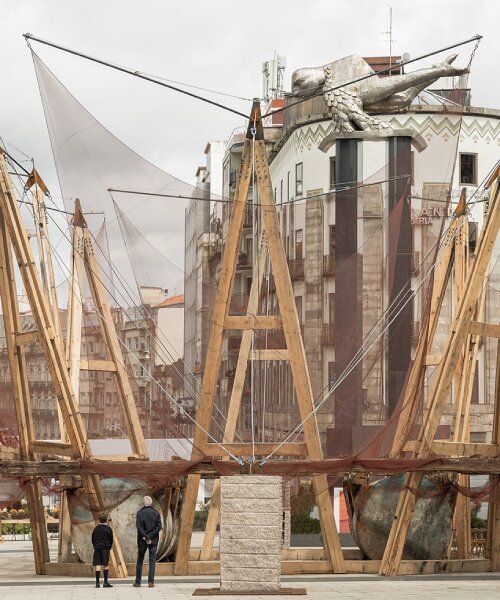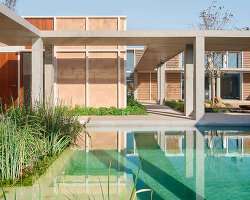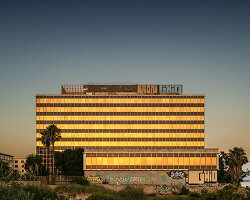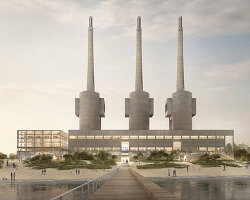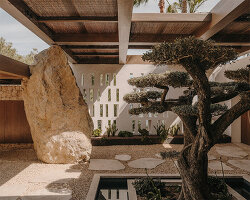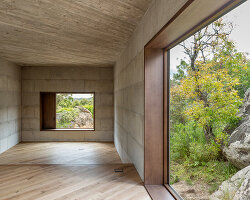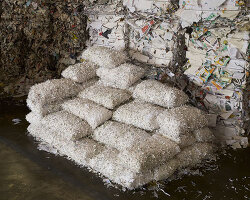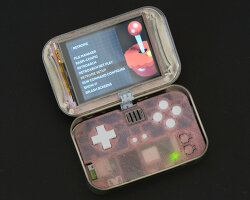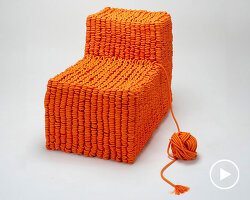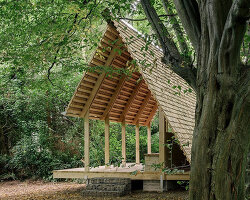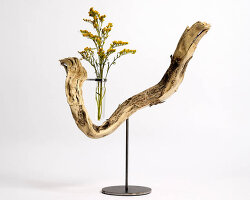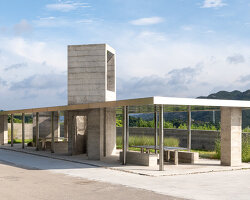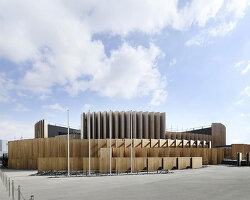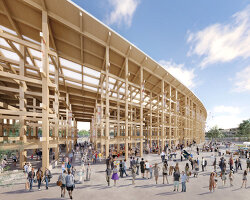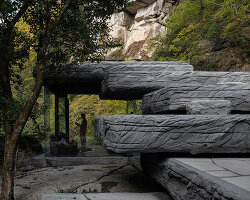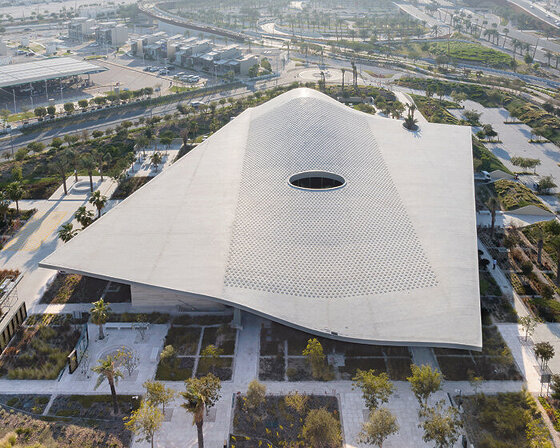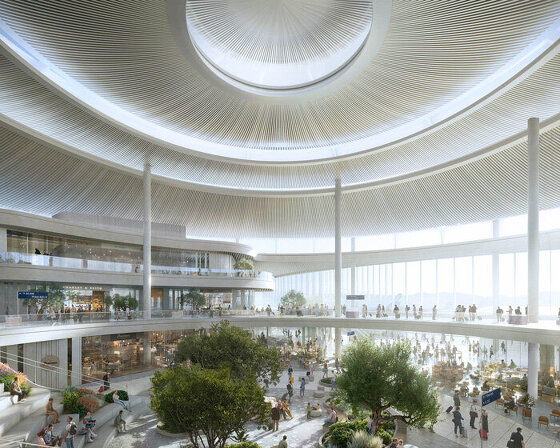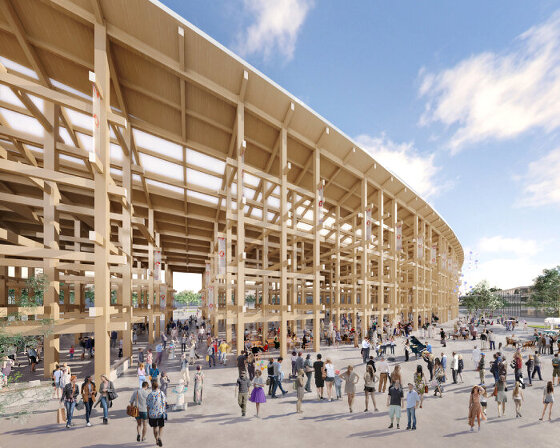+ cruz.atelier completes the ¡Qué Faena(r)! pavilion in galicia
+ cruz.atelier’s ¡Qué Faena(r)! reimagines the relationship between nature and artifice in Galicia, Spain, through a pavilion inspired by the region’s mussel platforms. With this structure, the Spanish architects address how architecture will be the tool for social transformation in public spaces shaped by resource extraction, integrating traditional craftsmanship, recycled materials, and sustainable practices.
The project links both ‘seas’ on solid ground through a pavilion built with two recognizable elements inserted as urban pieces: the Galician mussel platform as the main structure, and the traditional fishing system on its roof as a lure and shelter for activities underneath. Vast in scale addressing the cultural and environmental challenges of the territory, it highlights circular economy principles. Over 82% of its form is constructed from materials that have reached the end of their useful life, including fishing nets, rusty drums, reclaimed mussel platform wood, and granite blocks. Becoming a conceptual mediator between the urban, cultural, and traditional elements of the place, it builds a vision of a contemporary society and creates a meeting point in the town while hosting cultural programming.
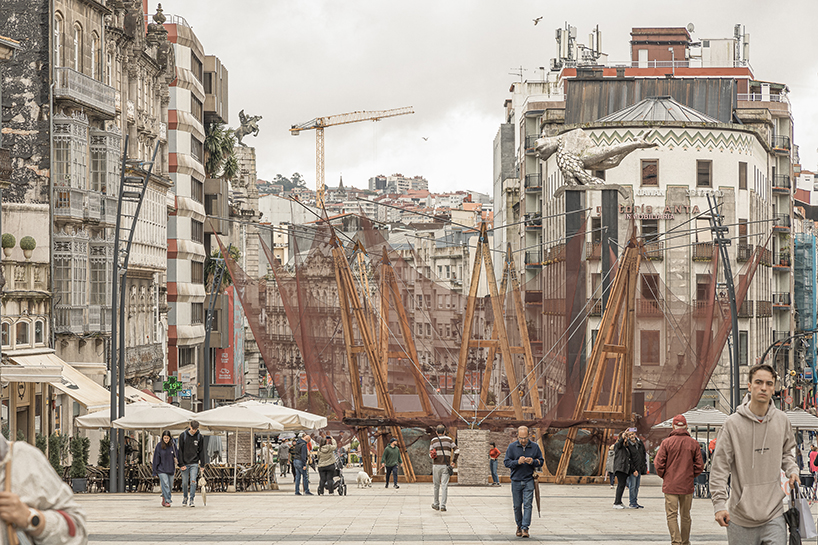
all images by Franzisco González unless stated otherwise
shaped from waste that has fulfilled its marine purpose
Galicia’s dual maritime identity — the serene ‘Sea of the Inside’ and the untamed ‘Sea of the Outside’ — forms the conceptual backdrop for + cruz.atelier’s ¡Qué Faena(r)!. Architects Oscar Cruz and Pablo Paradinas draw inspiration from mussel platforms, iconic structures rooted in the region’s fishing industry, to create an artifact approaches architecture and artifice, tradition and mediation in parallel. On one hand, the vernacular derived from tradition applied to a territory once believed to be consolidated; on the other hand, and as the main challenge, the establishment of a proximity network between architects, resources, artisans, and local suppliers.
In its design, the pavilion seeks the involvement of local artisans alongside architects through the reuse of waste. After fulfilling their mission at sea, these elements are repurposed in collaboration with stonemasons, carpenters, and the redeira association, promoting a circular and local economy. This further has allowed the use of recovered, zero-kilometer materials and a reinterpretation of traditional knowledge to create a large-scale urban artifact that combines tradition and innovation. Once the pavilion has served its purpose, the materials will be reintegrated into the industrial circuit, ensuring ongoing sustainability. Additionally, by promoting the use of freshly sawed ‘green’ eucalyptus wood, its continuous extraction is encouraged, contributing to the reduction of its dominance in Galician forests. This approach not only allows for quick material availability but also reduces energy costs associated with artificial wood drying. ¡Qué Faena(r)!’s design thus strikes a clear balance between extraction and immediate reuse, achieving sustainable circular forest management.
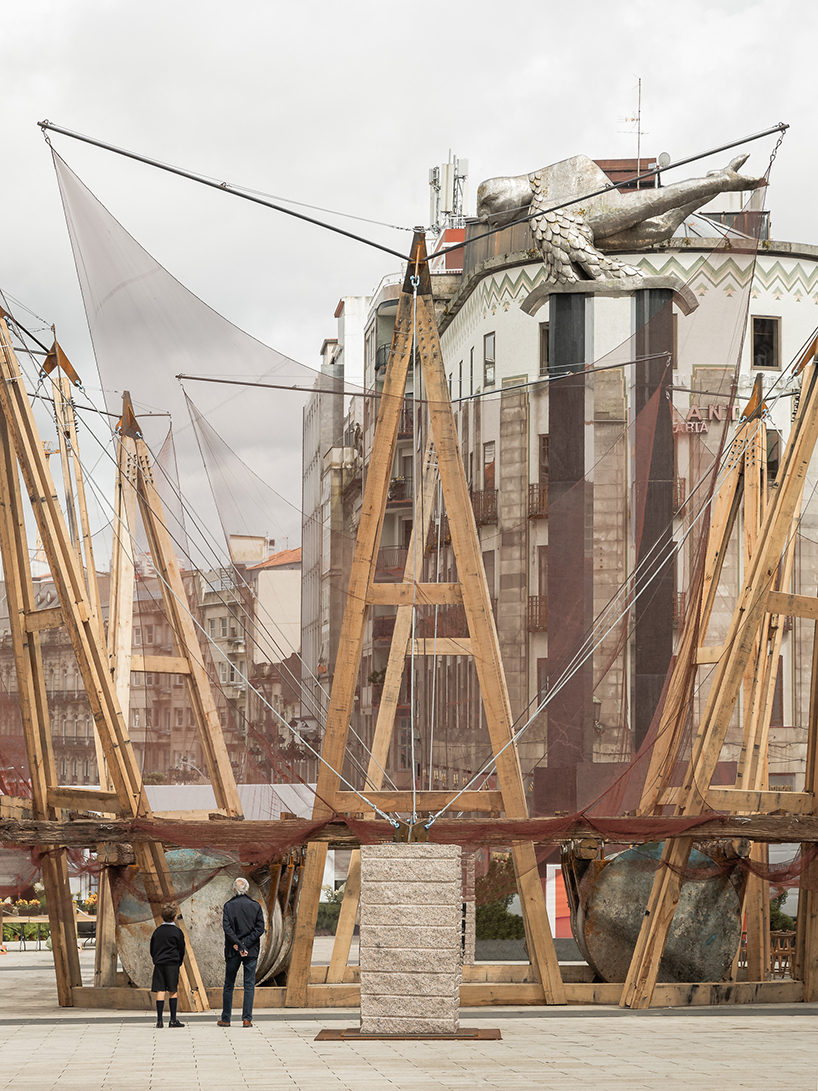
+ cruz.atelier completes ¡Qué Faena(r)!
enforcing a circular & local economy for sustainable architecture
The Xunta de Galicia, through the Fortra wood traceability platform, has certified the removal of 17,797.85 kilograms of CO2 due to the use of reused and zero-kilometer woods, equivalent to what 187 cars produce over 500 kilometers. During its useful life, the mussel platform wood faces extreme conditions — strong waves, winds from the estuary, the sun, and marine biological life that adheres to its surface make this material. After three decades of service, this hostile environment contributes to the formation of a special patina and a unique texture, marked by the constant ebb and flow of waves and the passage of time, giving the wood incomparable character and beauty.
Salt and water impregnate the wood, increasing its density and strength, while the marks of time tell the biological story of its life at sea. Each year, 100 million tons of plastic waste are released into nature, and a tenth ends up in the oceans. ‘Ghost nets’ too account for 10% of total waste and dumping into the sea, destroying coral, devastating habitats of sessile animals, damaging marine vegetation, accumulating sediments, and blocking access to niche habitats for certain species.
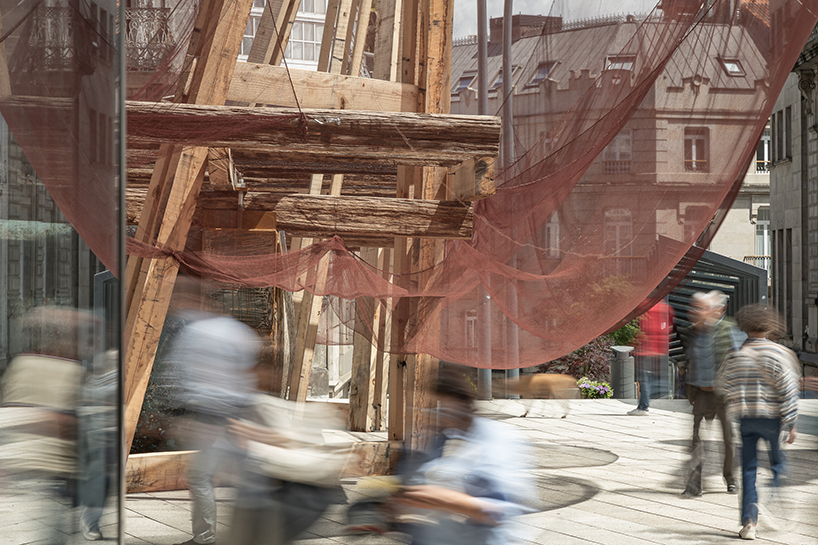
the pavilion reimagines the relationship between nature and artifice in Galicia, Spain
Like the mussel platforms, the nets are elements that form part of fishing as a productive activity, but also cultural and anthropological, as their sewing and repair have traditionally been done by women. The gender bias in this activity has also generated a community and solidarity specific to the women of the sea. Galicia is land of wind. This natural resource not only provides energy as an energy booster but the force of its nature is visible through the cyclical natural processes of erosion that, over millennia, have shaped this region. Galicia is land of granite. From its vast quarries, in the heart of the extractive territory, the pink color stands out from the depths of Pontevedra due to the presence of potassium feldspars in its composition. Stones inside the mountain don’t improve; they only remain; outside, in the air, with rain, wind, and cold, they improve, they harden.
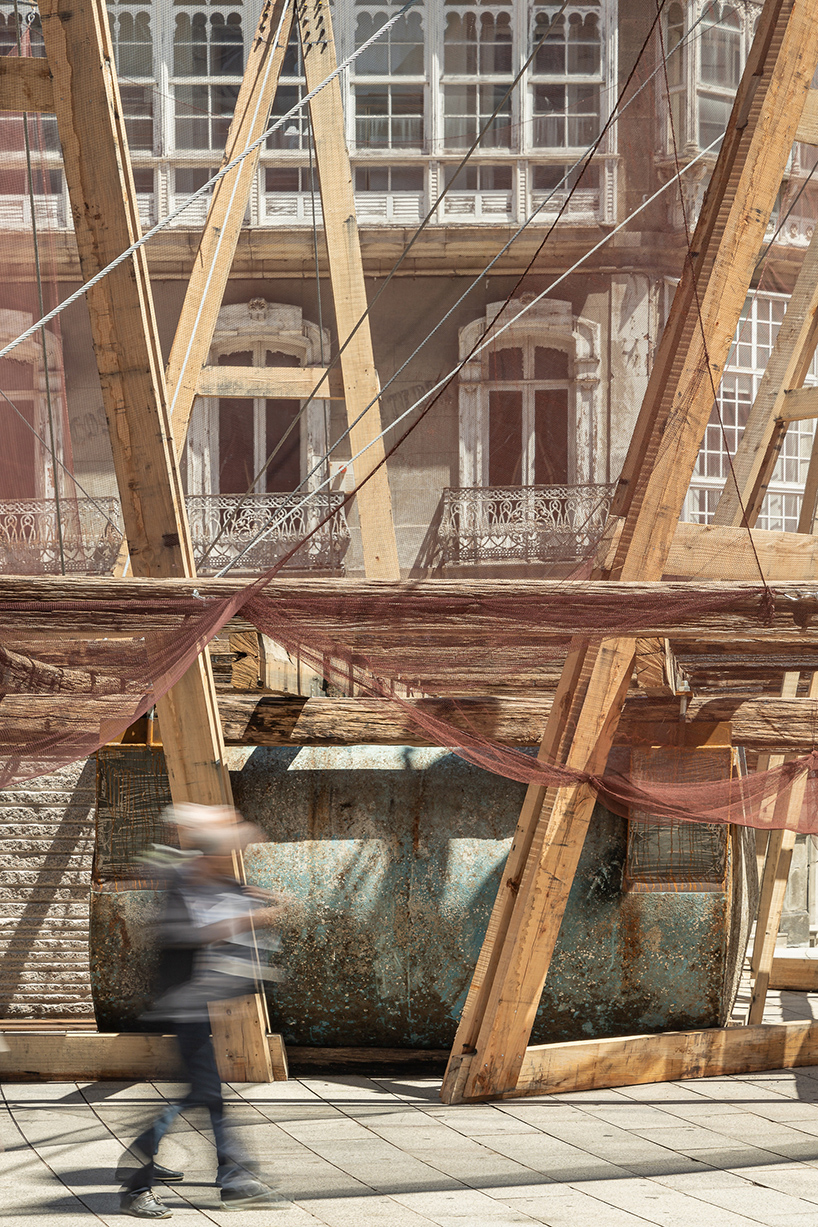
inspired by the region’s mussel platforms
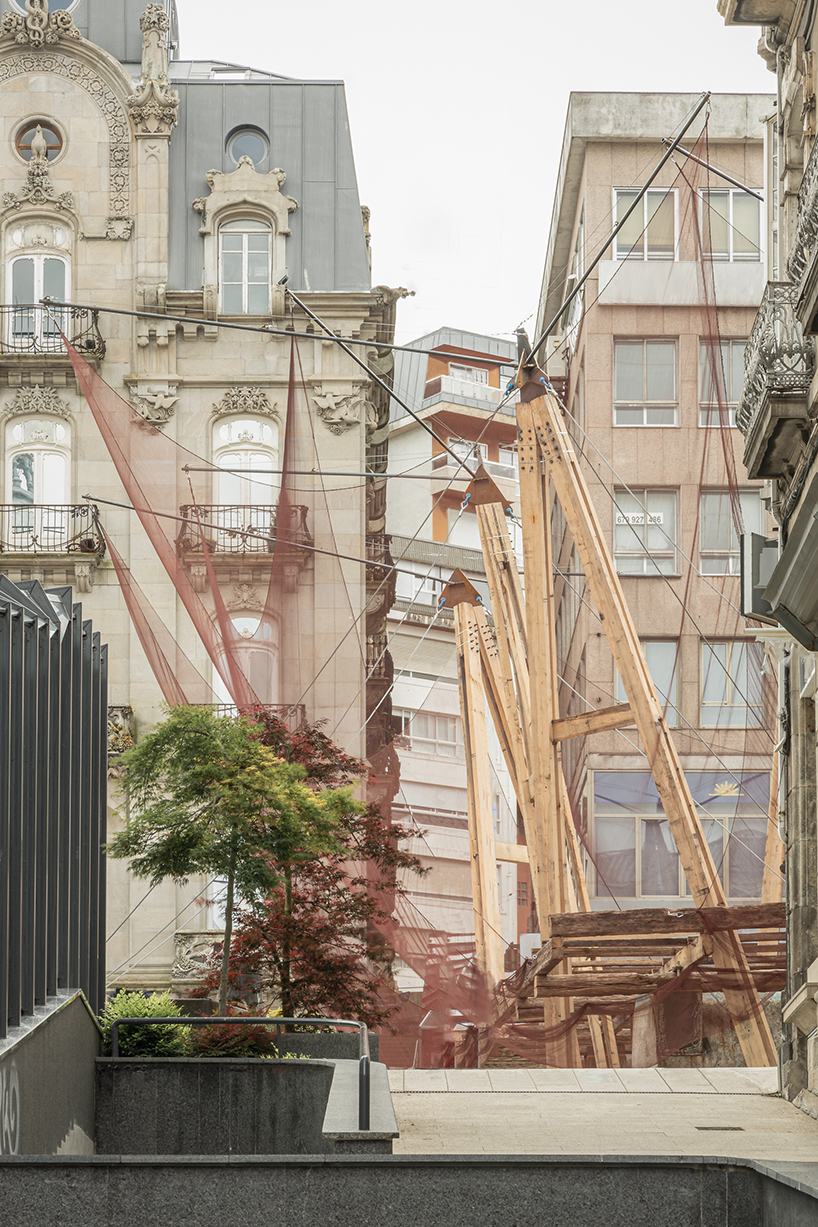
over 82% of its form constructed from materials that have reached the end of their useful life
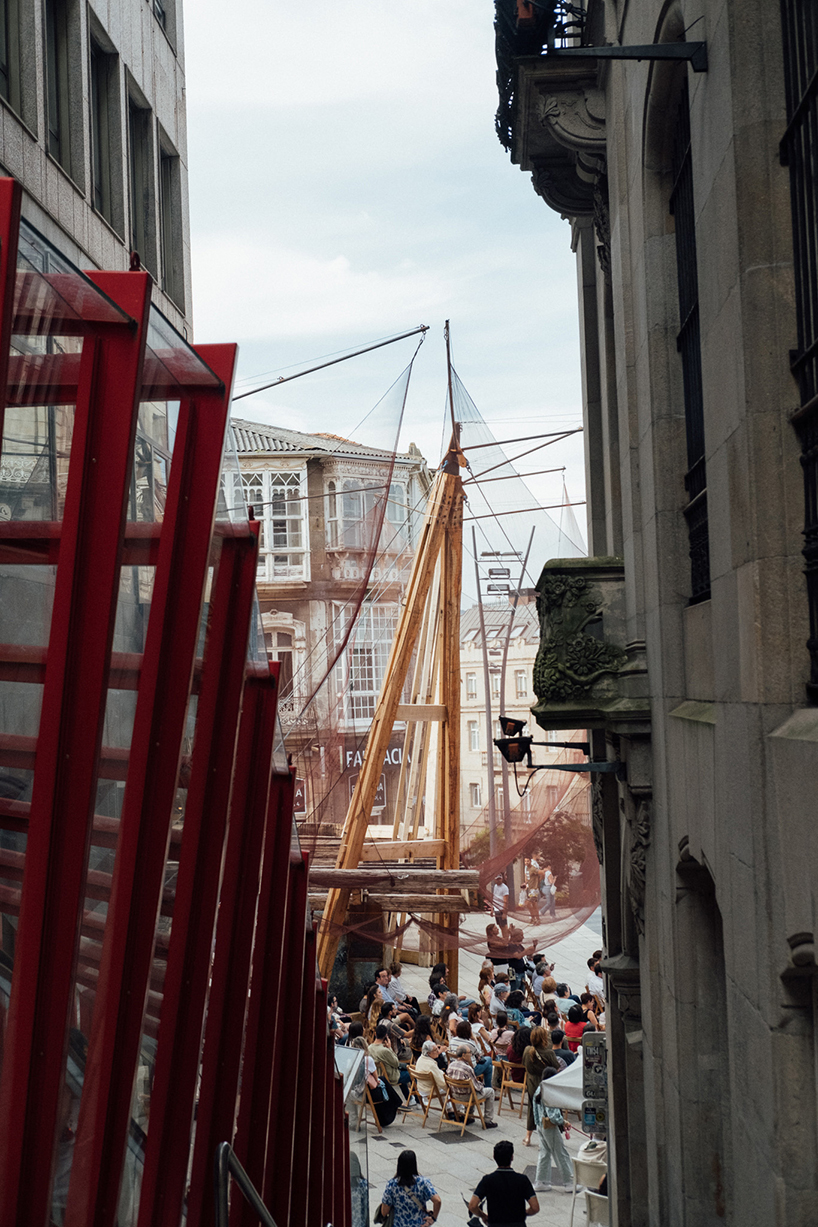
image by José Guilherme Marques
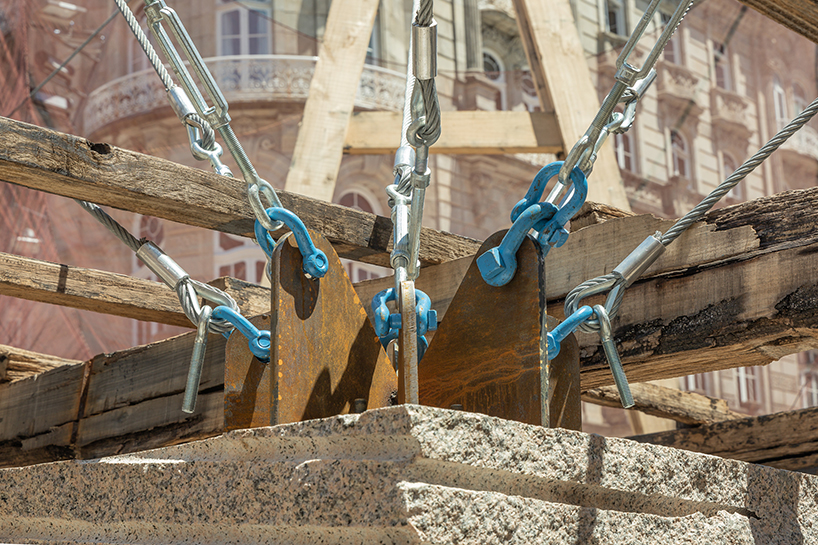
the materiality includes fishing nets, rusty drums, reclaimed mussel platform wood, and granite blocks
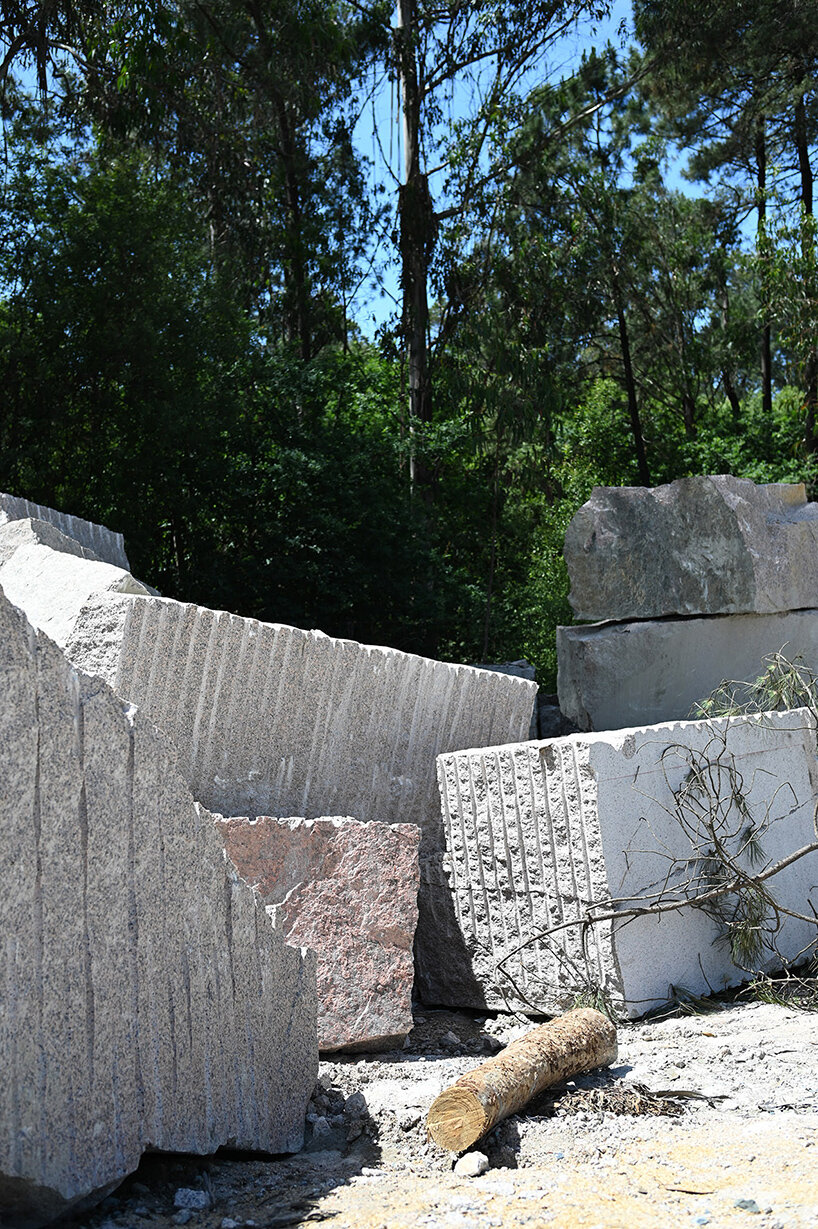
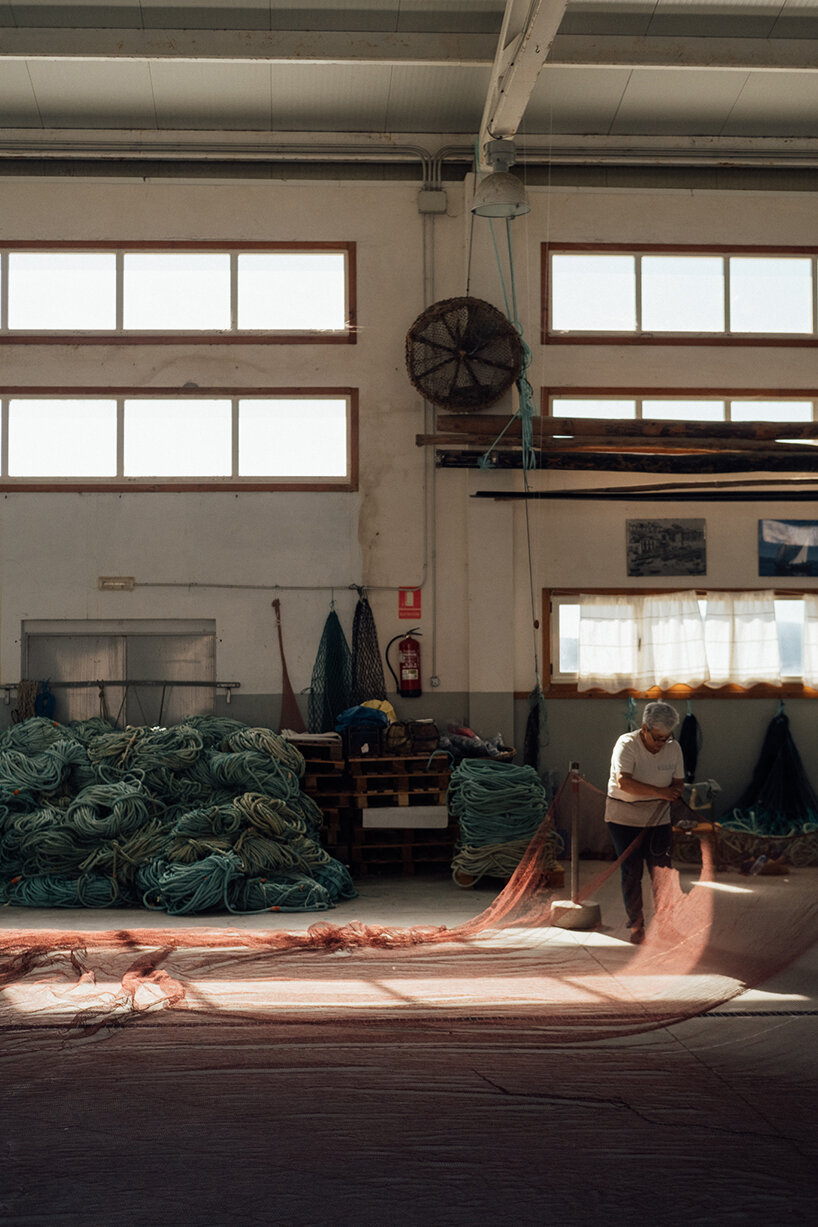
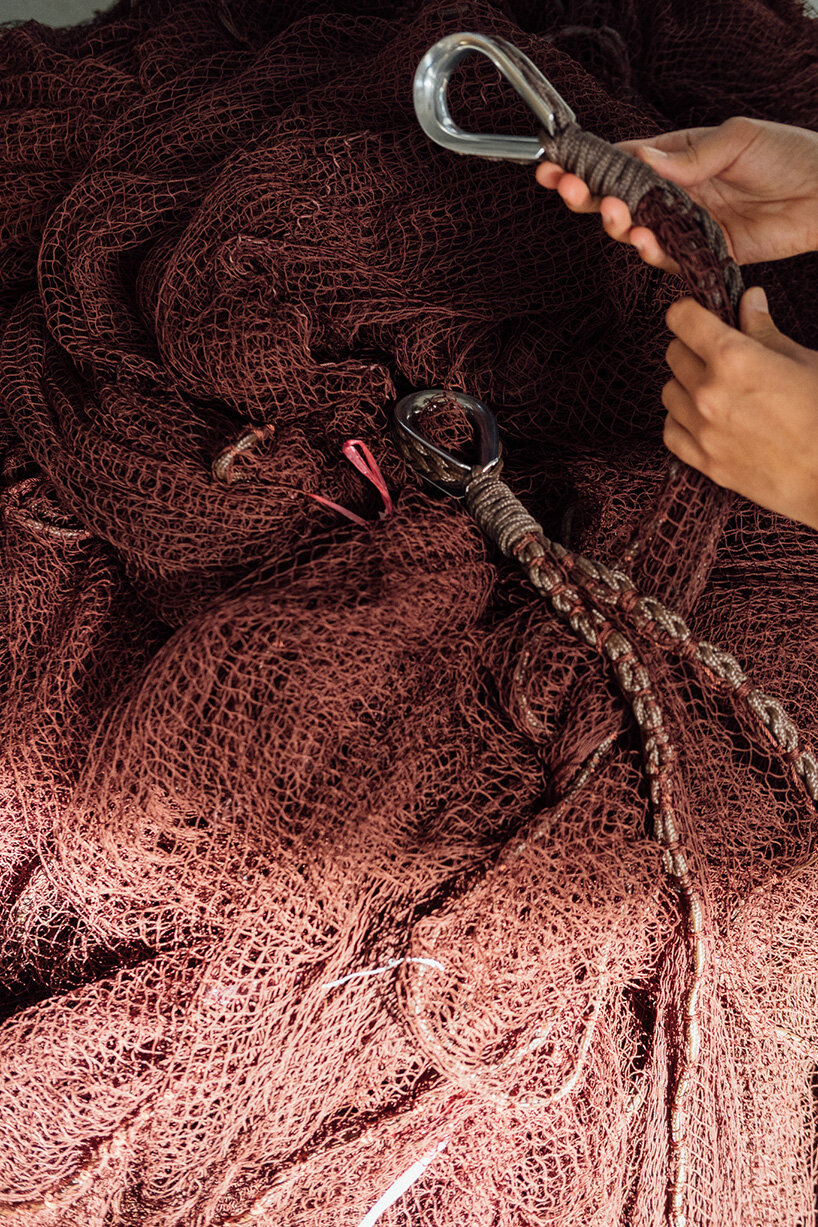
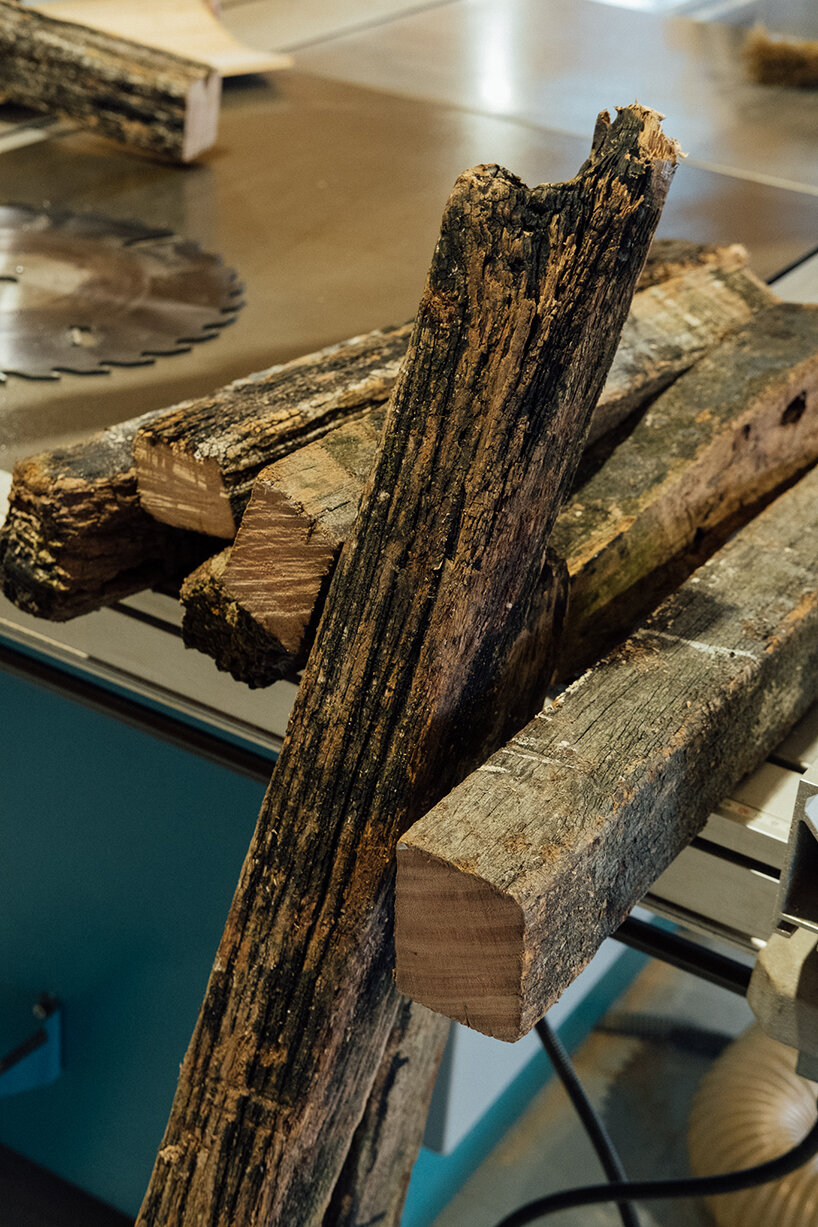
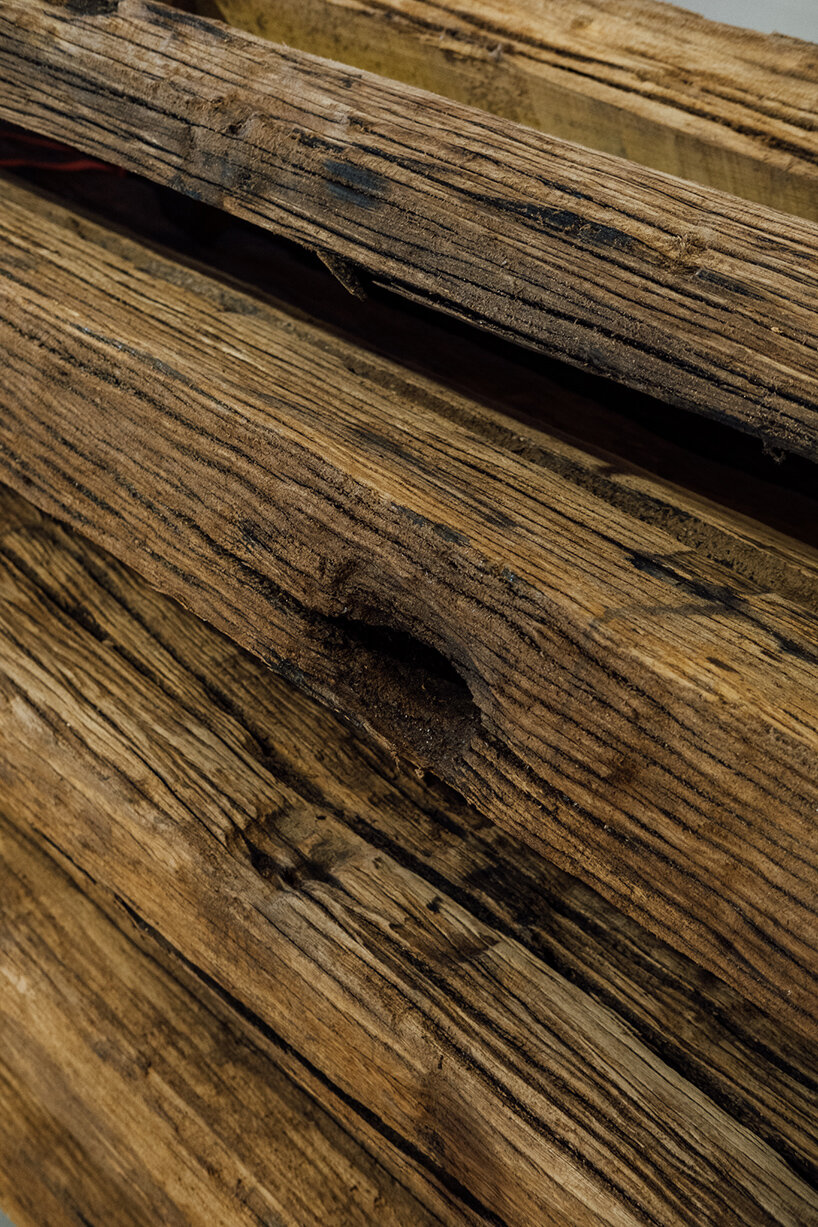
project info:
name: ¡Qué Faena(r)!
architect: + cruz.atelier | @cruz.atelier
lead architect: Oscar Cruz, Pablo Paradinas
location: Galicia, Spain
designboom has received this project from our DIY submissions feature, where we welcome our readers to submit their own work for publication. see more project submissions from our readers here.
edited by: ravail khan | designboom
